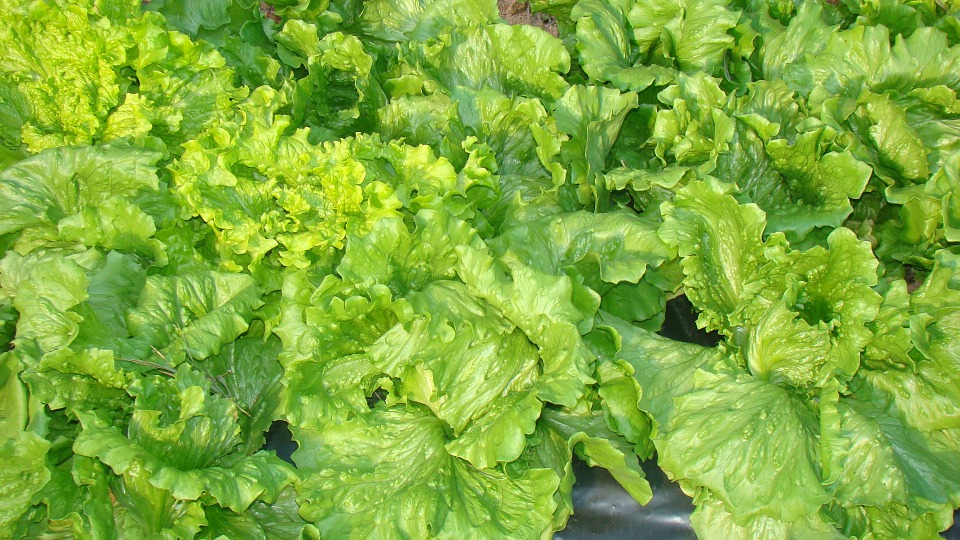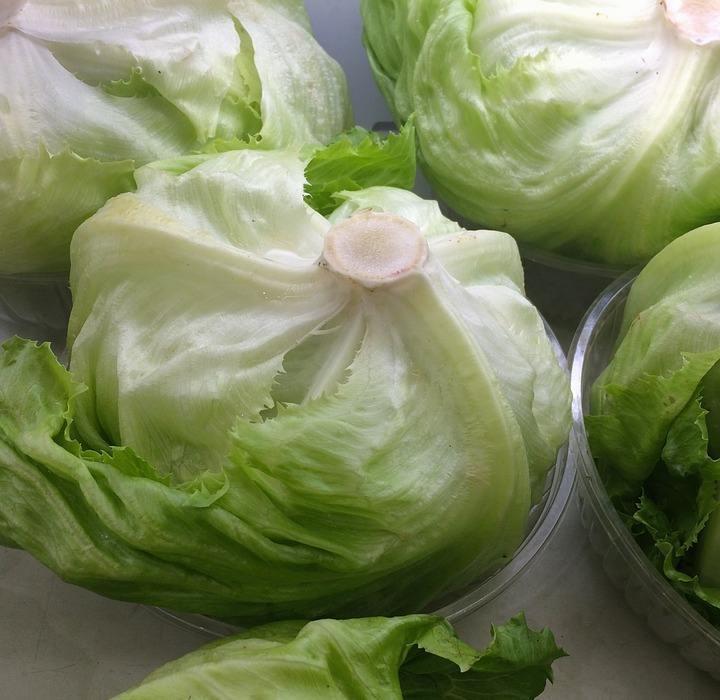This article provides a comprehensive guide to understanding the complexities of lettuce consumption for rabbits. We'll explore the nutritional value and potential risks associated with various lettuce types, offering insights into safe options and those to avoid. We'll delve into the importance of a balanced diet, emphasizing the role of hay as the primary food source. Finally, we'll address common questions and concerns regarding lettuce and rabbit health.
Part 1: The Nutritional Value of Lettuce for Rabbits

1.1 Essential Nutrients in Lettuce
Fiber: Lettuce, especially loose-leaf varieties, offers valuable dietary fiber, crucial for maintaining healthy digestion in rabbits. Fiber promotes regular bowel movements, preventing digestive issues like stasis and bloating.
Vitamins: Lettuce provides several essential vitamins, including:
Vitamin A: Supports vision, growth, and immune system function.
Vitamin C: Acts as an antioxidant, boosting the immune system.
Vitamin K: Essential for blood clotting and bone health.
Minerals: Lettuce contains essential minerals like:
Potassium: Plays a role in regulating fluid balance and muscle function.
Calcium: Important for bone growth and maintenance, but excessive intake can be detrimental to rabbits.
Magnesium: Supports bone health, muscle function, and nerve activity.
Part 2: The Risks of Feeding Lettuce to Rabbits

2.1 Calcium Content: A Major Concern
Calcium Toxicity: Rabbits are susceptible to calcium stones, making high-calcium foods a major concern. Excessive calcium intake can lead to urinary tract problems and even kidney failure.
Lettuce Varieties to Avoid:
Iceberg Lettuce: Notorious for its high calcium content and low nutritional value, making it unsuitable for rabbits.
Romaine Lettuce: While offering some nutritional value, romaine lettuce contains high levels of calcium, limiting its suitability for frequent consumption.
Cos Lettuce: Similar to romaine, cos lettuce is high in calcium and should be avoided.
Buttercrunch Lettuce: Despite its name, buttercrunch lettuce contains high levels of calcium and is unsuitable for rabbits.
Calcium-Rich Alternatives: If you're seeking calcium-rich leafy greens, offer a small amount of dandelion greens or spinach occasionally.
2.2 Low Nutritional Value of Certain Lettuce Types
Iceberg Lettuce: The high water content of iceberg lettuce provides minimal nutritional value and can lead to digestive upset, particularly diarrhea and bloat.
Other Low-Nutrient Options: Some lettuce varieties, like butterhead and Boston lettuce, while safer than iceberg, offer limited nutritional value compared to other leafy greens.
2.3 Potential Pesticide and Herbicide Residues
Commercial Lettuce: Lettuce grown commercially may contain residues of pesticides and herbicides, which can be harmful to rabbits.
Minimizing Exposure: Opt for organic lettuce whenever possible to reduce exposure to these chemicals. If you cannot find organic options, thoroughly wash conventional lettuce before feeding it to your rabbit.
Part 3: Safe Lettuce Varieties for Rabbits
3.1 Choosing Suitable Lettuce Types
Loose-Leaf Lettuce: Varieties like red leaf, green leaf, and butterhead lettuce are generally safe for rabbits in moderation. They are lower in calcium and higher in fiber than other types.
Spinach: While not technically lettuce, spinach is a leafy green that can be offered in small amounts. It is rich in nutrients and can be a healthy addition to their diet.
Kale: Similar to spinach, kale is a nutrient-dense leafy green, but should be offered in moderation due to its high calcium content.
3.2 Recommended Serving Sizes and Frequencies
Small Amounts: Offer small portions of safe lettuce varieties, around a handful a few times a week.
Observe Individual Needs: Consider your rabbit's size, age, and activity level when determining the appropriate amount.
Part 4: Introducing Lettuce to Your Rabbit's Diet
4.1 Gradual Introduction for Safety
Start Small: Begin by introducing a tiny piece of lettuce, observing for any adverse reactions.
Increase Gradually: If your rabbit tolerates it, slowly increase the amount of lettuce over a few days.
4.2 Monitoring Your Rabbit's Health
Digestive Health: Monitor stool consistency and frequency. Changes in stool can indicate digestive issues.
Water Intake: Ensure your rabbit has access to fresh water at all times, as lettuce can be dehydrating.
General Behaviour: Observe your rabbit's behaviour for any changes or signs of discomfort.
Part 5: Hay – The Cornerstone of a Rabbit's Diet
5.1 The Importance of Hay
Essential for Digestion: Hay provides the essential fiber necessary for maintaining healthy digestion, preventing stasis and promoting regular bowel movements.
Dental Health: Chewing hay helps to wear down teeth, preventing overgrowth and dental problems.
5.2 Timothy Hay: The Ideal Choice for Adult Rabbits
Optimal Fibre Content: Timothy hay offers an excellent balance of fiber and low calcium, making it the ideal choice for adult rabbits.
Other Hay Varieties: Oat hay and meadow hay can be offered in moderation alongside timothy hay to provide variety.
Part 6: Additional Diet Considerations
6.1 Fresh Herbs: A Healthy Treat
Safe Herb Options: Parsley, cilantro, dill, and basil are generally safe for rabbits in small amounts.
Avoid Toxic Herbs: Certain herbs like mint, oregano, thyme, and rosemary are toxic to rabbits and should be avoided.
6.2 Pellet Food: A Limited Supplement
High-Quality Pellets: Choose pellets specifically formulated for rabbits, providing appropriate levels of fiber, protein, and nutrients.
Limited Intake: Pellets should make up only a small portion of a rabbit's diet, with hay being the primary food source.
Part 7: FAQs about Lettuce and Rabbit Health
7.1 Can Rabbits Eat Lettuce Every Day?
While some lettuce varieties are safe, they should not be a daily staple. Offer lettuce in moderation, as part of a balanced diet consisting mainly of hay.
7.2 How Much Lettuce Can a Rabbit Eat?
The appropriate amount depends on the rabbit's size, age, and individual health. A general guideline is a small handful a few times per week.
7.3 What Happens if My Rabbit Eats Too Much Lettuce?
Excessive lettuce consumption can lead to digestive issues like diarrhea, bloat, and calcium stones. Monitor your rabbit's health and adjust their diet accordingly.
7.4 Is It Safe to Give My Rabbit Lettuce Every Day?
It's generally not recommended. A balanced diet of hay, fresh herbs, and a small amount of pellets is essential for maintaining their health.
7.5 Is It Safe to Give My Rabbit Lettuce With Pesticides?
No, it's not safe. Pesticides can be harmful. Choose organic lettuce or wash conventional lettuce thoroughly before feeding it to your rabbit.
7.6 What if My Rabbit Eats Lettuce and Starts Having Digestive Problems?
If your rabbit experiences digestive issues after eating lettuce, consult a veterinarian. They can provide guidance on adjusting the diet and treating any problems.
7.7 Can Rabbits Eat Lettuce Cores?
While some rabbits may enjoy lettuce cores, it's best to avoid them. Cores are often dense and difficult to digest, potentially leading to digestive issues.
7.8 Can I Give My Rabbit Wilted Lettuce?
No, wilted lettuce can harbour bacteria and become unsafe for rabbits. Always offer fresh, crisp lettuce.
7.9 Are There Any Other Leafy Greens That Are Safe for Rabbits?
Yes, other safe options include dandelion greens, cilantro, parsley, and small amounts of spinach and kale. However, these should also be offered in moderation due to their calcium content.
Everyone is watching
-

Do Rabbits Lay Eggs? (The Surprising Truth)
OTHER TYPES OF PETSThis article will unravel the common misconception that rabbits lay eggs, exploring the fascinating world of r...
-

What's a Group of Rabbits Called? (A Comprehensive Guide)
OTHER TYPES OF PETSThis article delves into the fascinating world of rabbits, exploring the various terms used to describe a grou...
-

Can Rabbits Eat Grapes? A Guide to Safe Rabbit Treats
OTHER TYPES OF PETSThis comprehensive guide will explore the safety and suitability of grapes for rabbits, providing detailed inf...
-

Predators That Hunt Rabbits: A Guide to Natural Enemies
OTHER TYPES OF PETSI've always been fascinated by the circle of life, that delicate dance between predator and prey. Growing up ...
-

Are Rabbits Nocturnal Animals?
OTHER TYPES OF PETSThe question of whether rabbits are nocturnal animals is a fascinating one, with a surprisingly complex answer...
